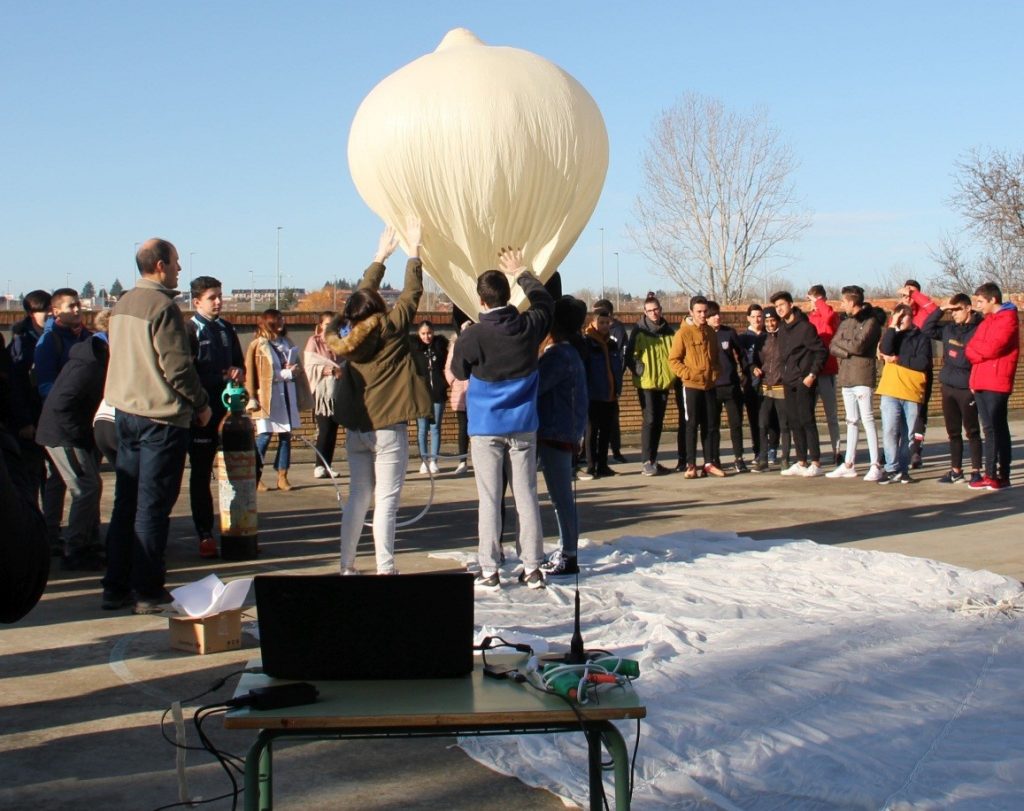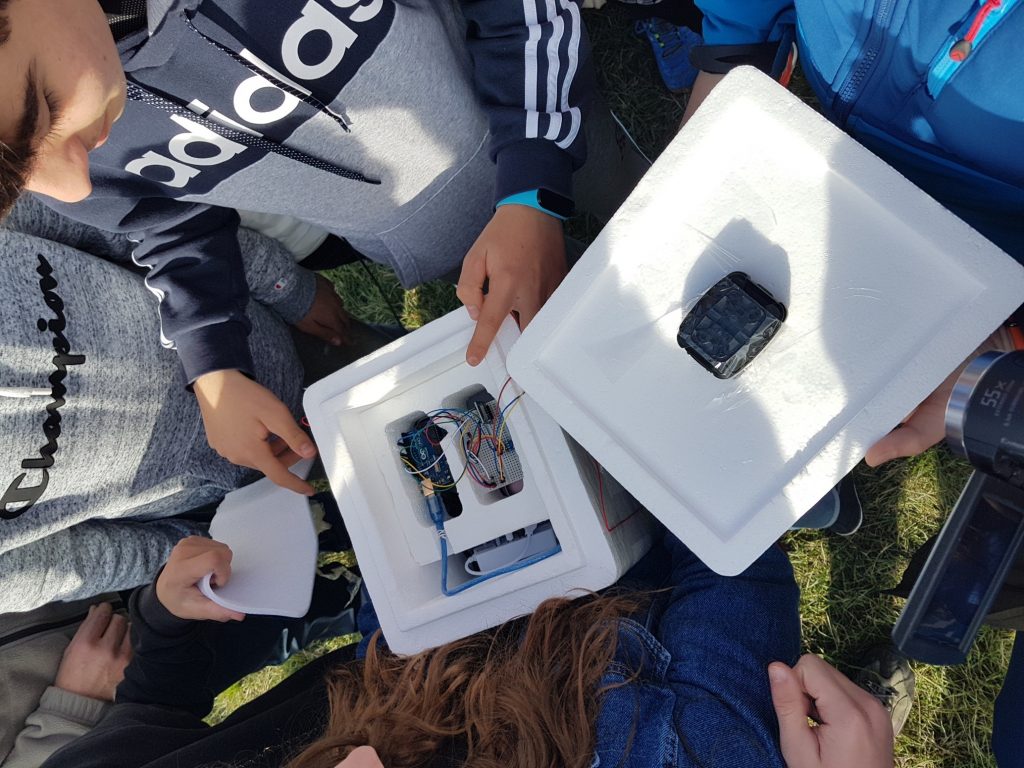Reaching the sky by coding: Students in Asturias, Spain launch a hig-altitude balloon into near space
Publication date: December 10, 2020
by Javier Redondas, teacher at the IES de Candás, Asturias, Spain
A group of students for the Candás secondary school (Asturias, Spain) have been working in the design, construction and testing their first “school space mission”, consisting in launching a high-altitude balloon into near space.
The main purpose of this experience, from the scientific point of view, is to approach the climate crisis and environmental sustainability, one of the issues that most concerns our society. We want students to reflect on the human impact on climate change and play an active role in the global response to climate change.

Earth from near space: picture taken by the onboard camera
We also focus on the topic of space and space missions and how their exploration allows us to have a better understanding of our planet.
In this sense, the objective is to study the atmosphere, composition, properties and dynamic phenomena by launching a stratospheric device, driven by a helium balloon and equipped with electronic systems to measure physical parameters and an SD card for data recording and further analysis.

Preparing for the launch
From a pedagogical perspective, our students were encouraged to demonstrate that it is possible to launch a high-altitude balloon in an educational environment, and they were able to look for information about similar experiments, design electronic systems and mechanical elements, as well as design, elaborate and integrate the different systems. Moreover, they could conduct some hands-on activities to test the performance in different extreme space-like conditions. The most challenging issue was to search and recover the payload after landing to analyze the collected data, images and videos.

Components of the payload
Our students worked in groups on the design of the capsule, the electronic instrumentation and the assembly and launch systems, as well as the preliminary tests with the aim of minimizing possible eventualities and unforeseen events. The probe was equipped with an electronic system, based on Arduino technology, for taking data of inner and outer temperature, pressure and humidity, and record it on an SD card. A GoPro camera was incorporated to take images and videos during the journey, as well as two GPS and APRS systems, to survey the path during the flight and, especially, to track its location and recovering after landing. All these devices were conveniently fastened and protected in a polystyrene container.

Launching
The launch, carried out on December 4, was initially scheduled for 24 May but was successively delayed due to weather conditions, the school holidays and other legal issues. Additionally, we conducted meteorological predictions, using specific software, to make an approximate calculation of the balloon path.
By participating in this project, students were encouraged to develop 21st-century learning skills like creativity, innovation, communication and collaboration, critical thinking and problem-solving, as well as life and career skills like productivity, perseverance, leadership and responsibility.
Video: Report on the launch in the news
More information on the project is available here.


